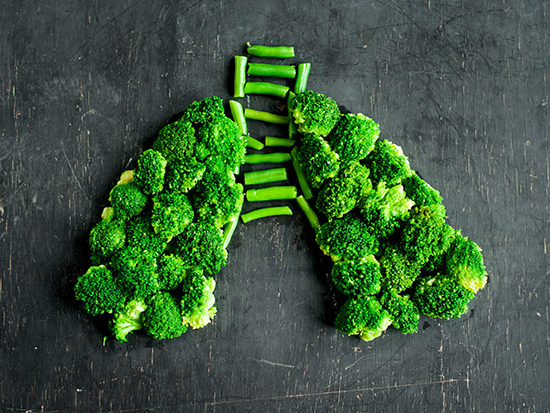 Patients suffering from cystic fibrosis often struggle with malnutrition, due to the disease’s impact on the digestive system and the increased energy needs of the body.Gaining weight can be difficult for patients suffering from cystic fibrosis. Patients often struggle with malnutrition, due to the disease’s impact on the digestive system and the increased energy needs of the body.
Patients suffering from cystic fibrosis often struggle with malnutrition, due to the disease’s impact on the digestive system and the increased energy needs of the body.Gaining weight can be difficult for patients suffering from cystic fibrosis. Patients often struggle with malnutrition, due to the disease’s impact on the digestive system and the increased energy needs of the body.
Julianna Bailey, Ph.D., instructor within the University of Alabama at Birmingham’s Division of Pulmonary, Allergy and Critical Care Medicine and registered dietitian for UAB’s Adult Cystic Fibrosis Program, has seen patients impacted by a new triple-combination therapy that is leading to increased weight gain and new dietary management plans for patients with CF.
Elexacaftor/tezacaftor/ivacaftor, sold under the brand name Trikafta, is the first triple-combination therapy available to treat patients with the most common cystic fibrosis gene mutation. It was approved by the United States Food and Drug Administration in 2019.
“Historically, CF was a disease of malnutrition patients,” Bailey said. “Most patients didn’t produce enough enzymes because CF affects the pancreas in addition to the lungs, so they had a lot of malabsorption.”
There are close to 40,000 children and adults living with cystic fibrosis in the United States, according to the Cystic Fibrosis Foundation.
She adds that, when patients underwent oral pancreatic replacement therapy, they had increased work of breathing with their lung disease, which led to patients’ burning an increased number of calories they would eat.
“My job used to be that I was helping people eat a high-calorie, high-protein diet,” Bailey said. “They would get in anywhere from 3,000 to 5,000 calories a day so they could gain and maintain weight.”
Bailey says that, after some patients were using Trikafta, which essentially treats the underlying causes of CF, their pulmonary and digestive functions were operating at an acceptable level. However, these patients were still eating a higher-protein and -fat diet.
“We think that’s the mechanism of the weight gain,” Bailey said.
 The Kirklin Clinic of UAB Hospital
The Kirklin Clinic of UAB Hospital
Photography: Andrea MabryShe adds that malnutrition had slowly been decreasing and over-nutrition, like overweight and obesity, was slowly increasing in the population with the advancements in clinical care and other novel drug therapies.
“My role really shifted from being a dietitian who was constantly telling people to get more calories in,” she said. “Now, I’m having to do the other end of the spectrum with weight management as well.”
Bailey says she now she collaborates with social workers at UAB who address body image issues, while trying to provide more weight-neutral approaches for patients to work on health behavior changes.
She adds that there are many unknowns moving forward for some patients who have dramatic weight gain; but some factors include barriers to healthy food, preferences, culture and lifestyle, and more.
Despite the new challenges, Bailey says she enjoys being able to help patients no matter what their situation is.
“I try to make sure I’m practicing from a perspective where I really take everything into consideration and I’m sensitive to people how they feel about things and also what it is that they want and what they’re trying to accomplish,” Bailey said.